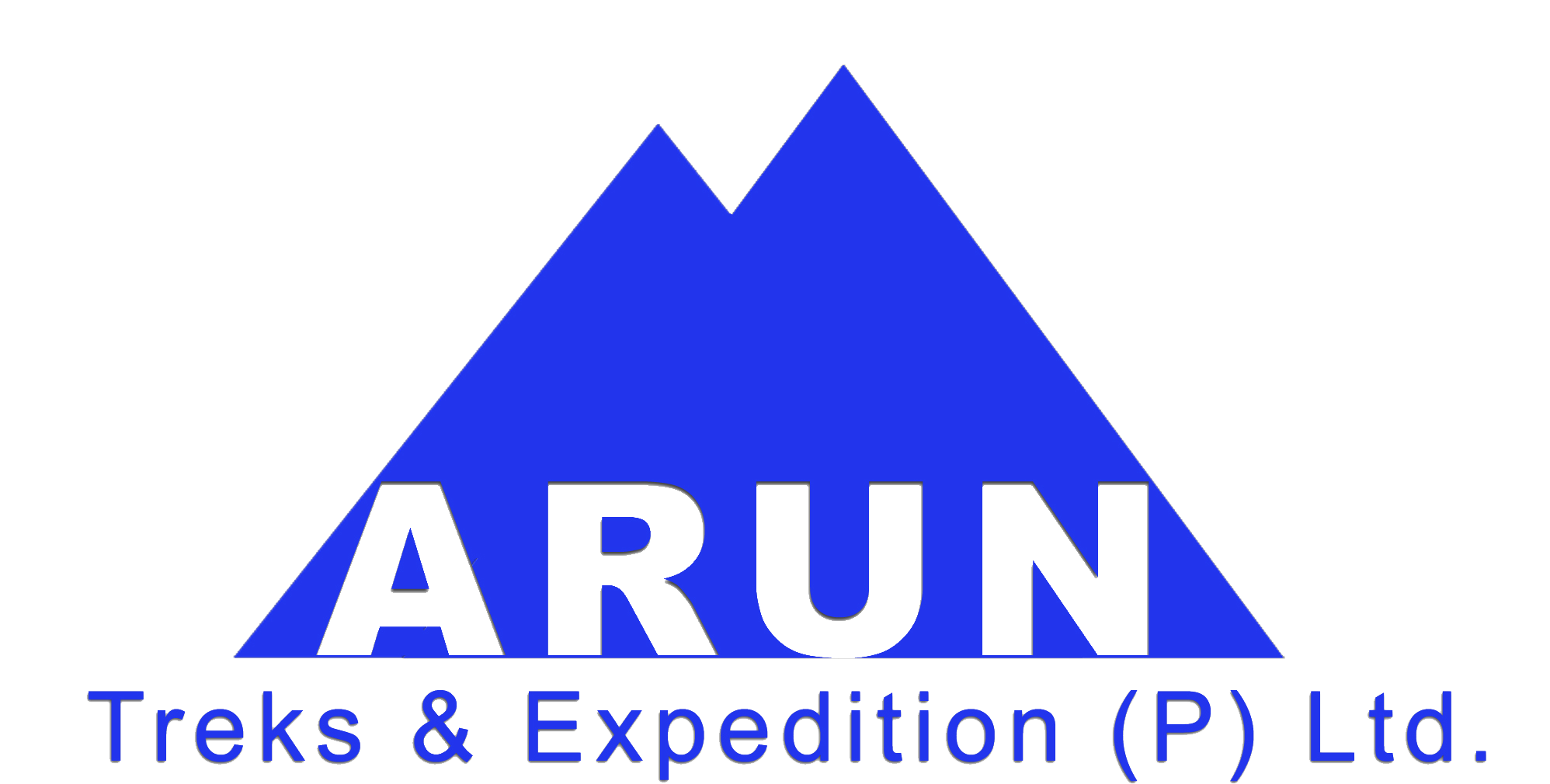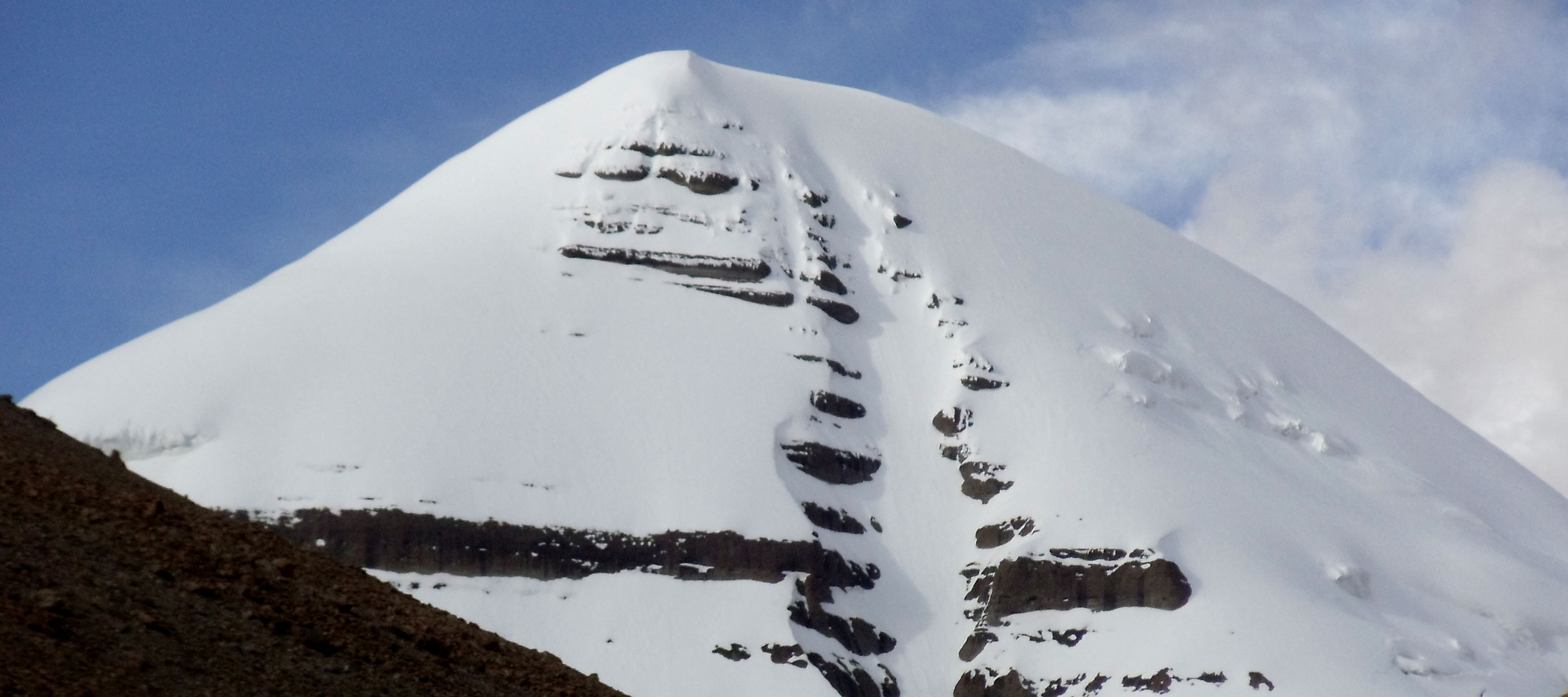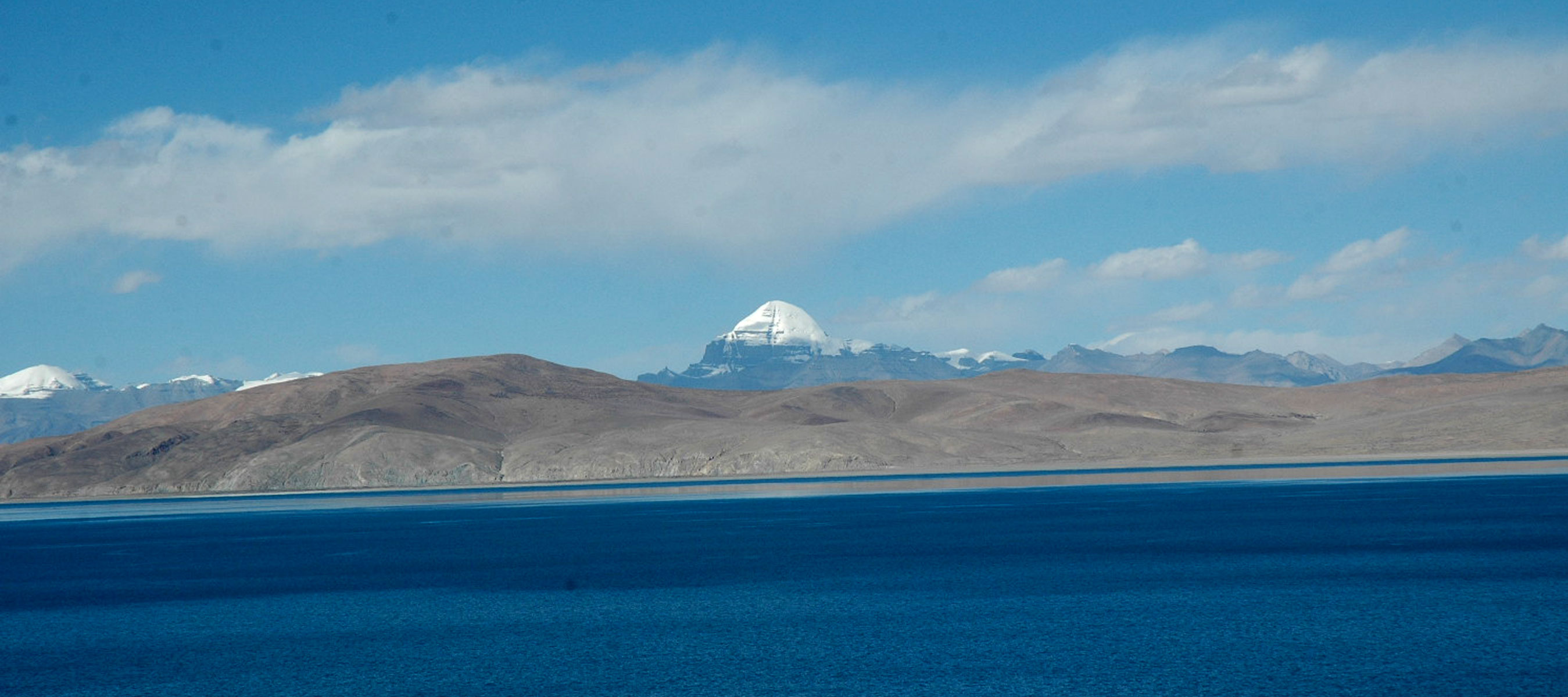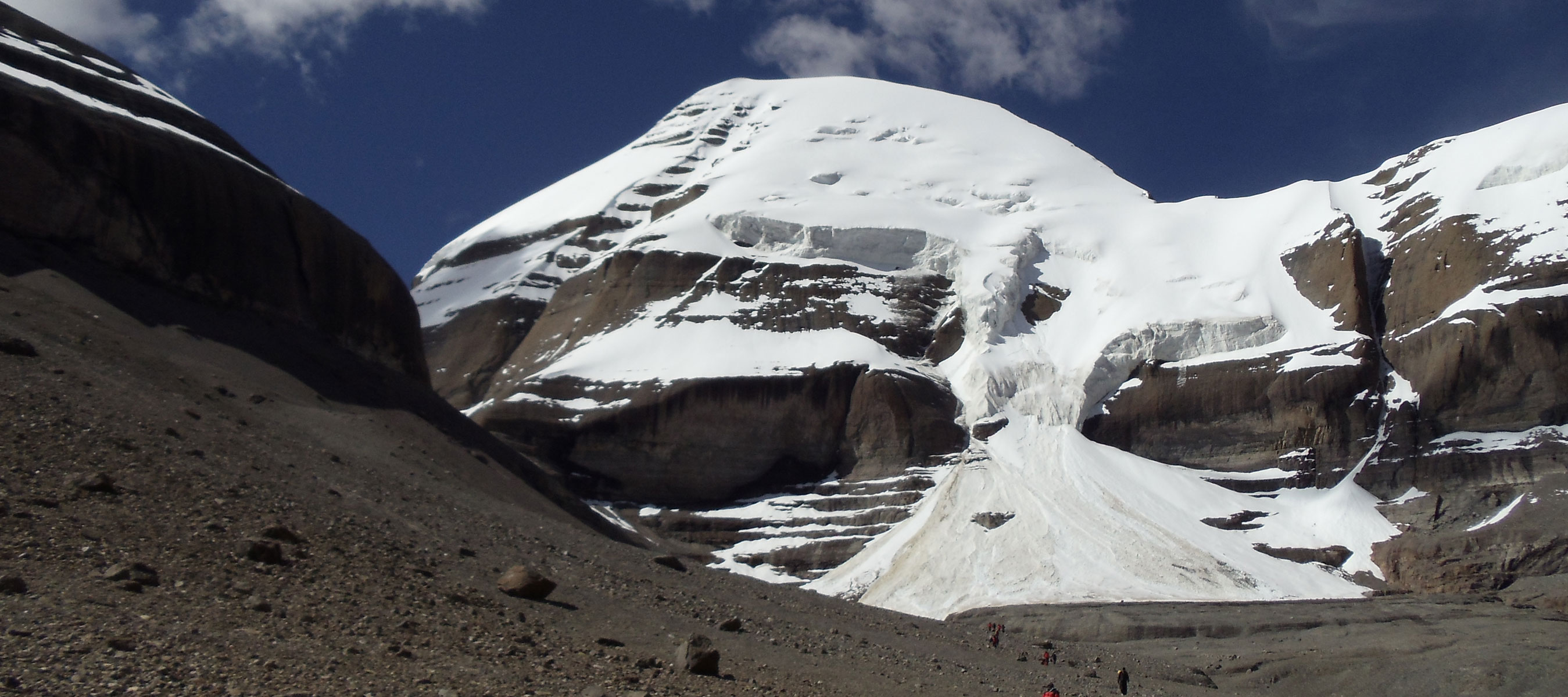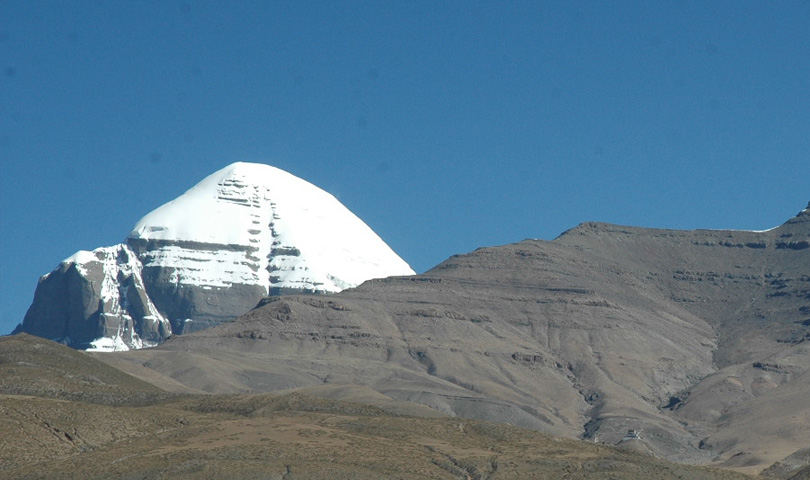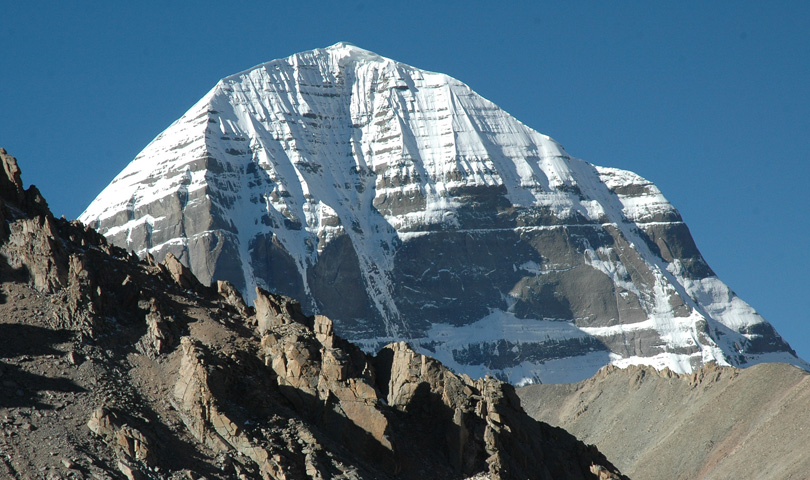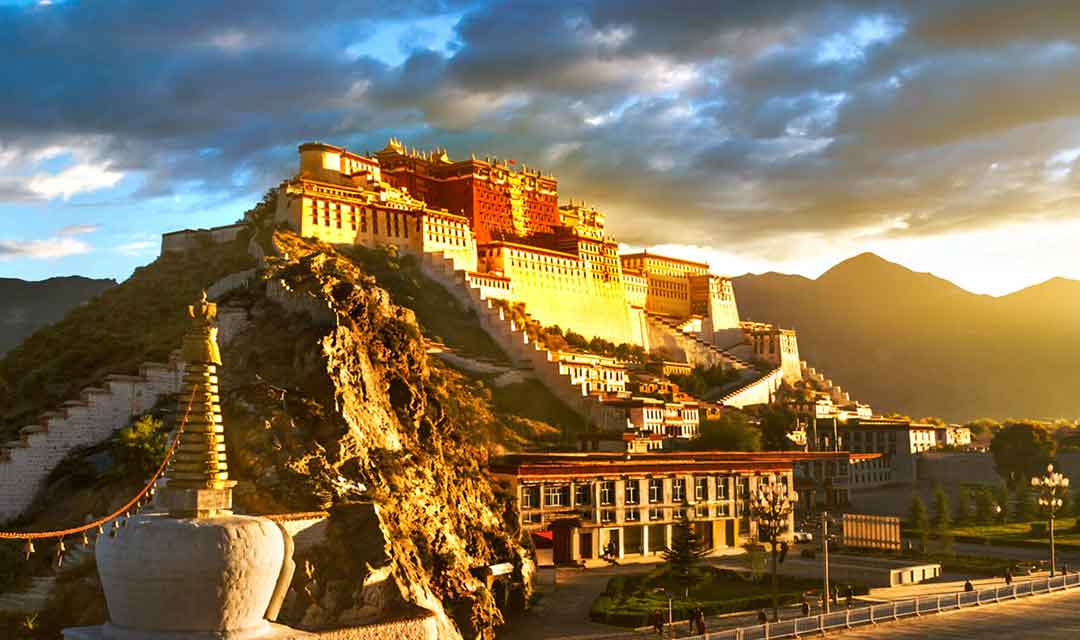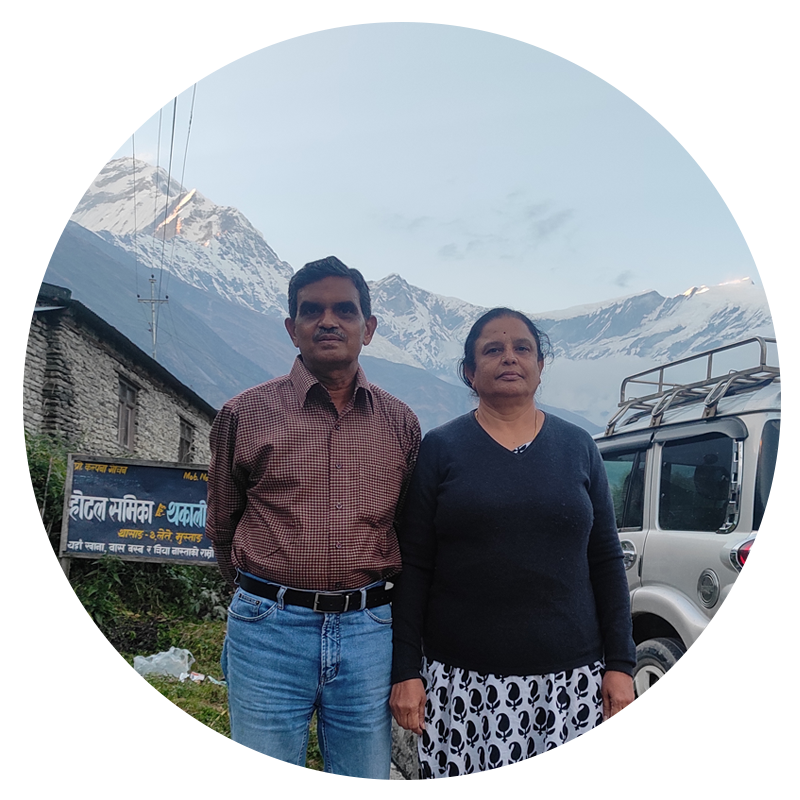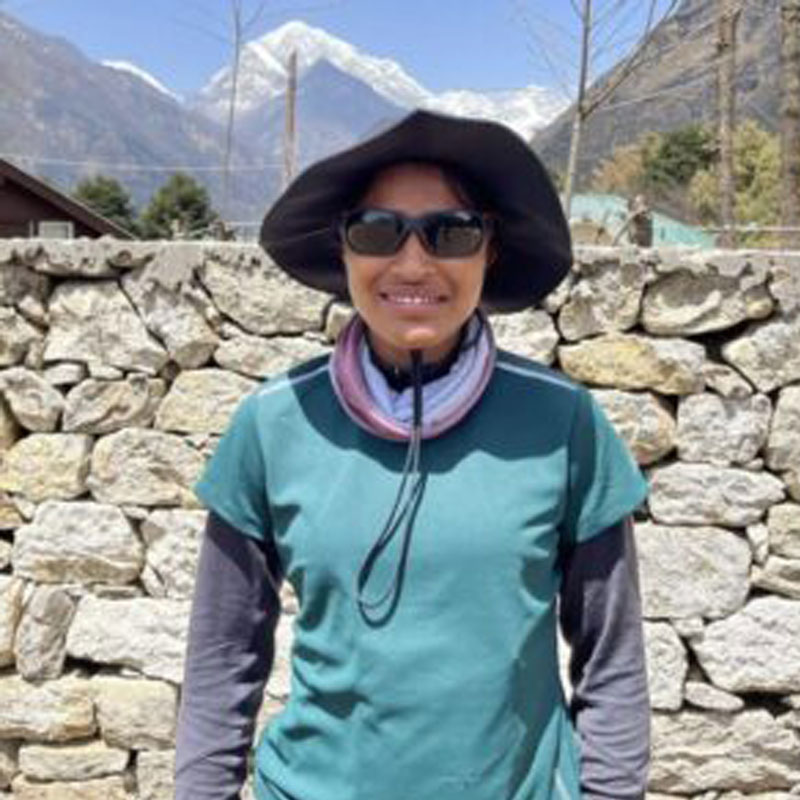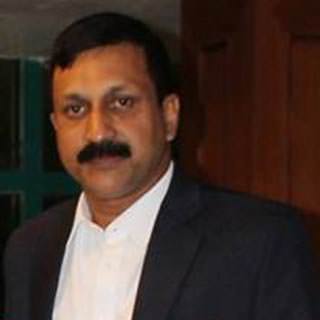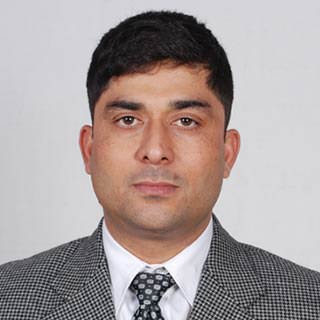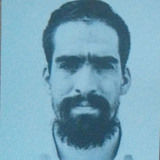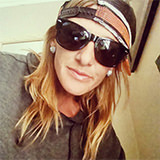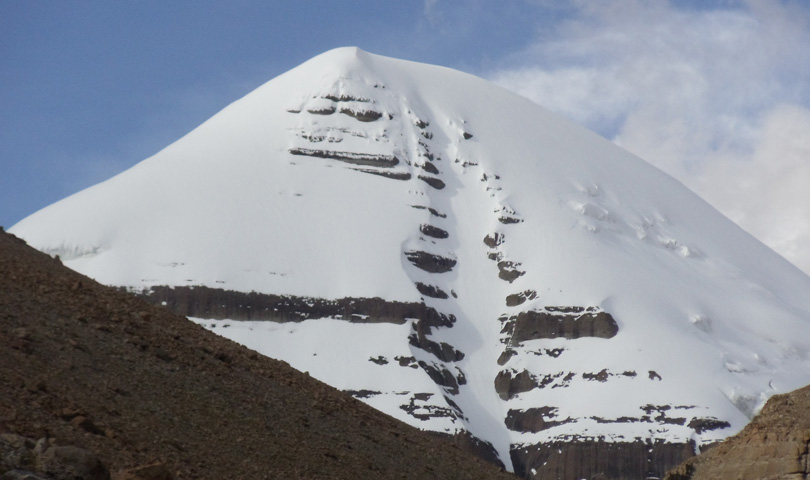
Mount Kailash is a peak in the Kailash Range, which forms part of the Transhimalaya in Tibet. It lies near the source of some of the longest rivers in Asia: the Indus River, the Sutlej River (a major tributary of the Indus River), the Brahmaputra River, and the Karnali River (a tributary of the River Ganga). It is considered a sacred place in four religions: Bön, Buddhism, Hinduism and Jainism. The mountain lies near Lake Manasarovar and Lake Rakshastal in Tibet.
 |
Arrival at kathmandu and transfer to hotel |
|
Arrival in Kathmandu: after all the Kathmandu post customs and immigration, you will be transferred to your hotel. Over night in Kathmandu |
|
 |
Fly to Nepalgunj about an hour flight. O/N at Hotel (Morning visit Pashupatinath temple). |
|
Morning visit the Pashupatinath Temple. Then, Fly to Nepalgunj and arrive in hotel. Overnight in Nepalgunj. |
|
 |
Fly from Nepalgunj to Simikot (2,865m) by twin otter or Dornier plane about an hour flight. |
|
Fly to Simikot (2950 m). On arrival to Simikot & O/N at Purang Guest house. |
|
 |
Fly to Hilsa by helicopter and same day drive to Taklakot (3,902m) |
|
We will Stay at Taklakot after fly from Hilsa. O/N at Guest House. |
|
 |
Acclimatization day at Taklakot (Purang). O/N at Guest House |
 |
Drive to Chiu Gomba (4,570m) Mansarovar lake - 88km. Overnight at Guest house |
|
Drive to Mansarovar Lake. Before reaching Mansarovar Lake you see Rakshyas Tal from the way, get first view of Holy Mt. Kailash . O/N at Chui Gompa. |
|
 |
Early morning puja/drive to Darchen base camp of Mt Kailash, (distance 35km) |
|
Early morning puja at Lake and drive to Darchen base camp of Mt Kailash, our guides will arrange horses and porters for the Parikarma. |
|
 |
Short drive to Tarboche and start trek to Diraphuk (12km) |
|
Short drive to Tarboche and trek to Diraphuk, the first prostration Point Tarboche Flag Pole(Yamadwar), the auspicious gateway and the sky burial ground, to Diraphuk (4765m). O/n at Guest house from where you have superb views of Mt.Kailash. |
|
 |
Trek to Zutulphuk via Dolma la Pass (4,790m) |
|
This is the day all pilgrims talk about, the most difficult journey through the Yatra, slowly climb over Dolmala Pass (5620m) and descend down to Zutulphuk. |
|
.png) |
Drive to Taklakot via Manasorovar Lake, Rakshash tal. |
|
We finish our Parikarma near by Darchen trek about 6 km down takes 2 hours. Drive to Taklakot via Manasorovar Lake, Rakshash tal. O/N at Guest House. |
|
.png) |
Cross the border and fly Simikot by Helicopter. Same day flight to Nepaljung and Kathmandu. |
|
Complete immigration and custom formalities. Cross the border and fly Simikot by Helicopter. Same day regular flight to Nepalgunj and also flight to Kathmandu. |
|
.png) |
Fly to home |
TO DOWNLOAD ITINERARY CLICK HERE

- Travel permit, registration fee & road maintenance fee
- Tibet Custom clearances
- 2 (two) nights hotel (Hotel Manaslu) in Kathmandu on twin sharing full board basis
- One night hotel Siddhartha or similar in Nepalgunj on twin sharing full board basis
- Kathmandu - Nepalgunj - Simikot - Kathmandu flight fare
- Simikot – Hilsa – Simikot by Helicopter fare
- Luxury bus during tour in Tibet section
- Truck to carry equipments and supply
- Hotel/Guest house/Mud House in Tibet on twin share, triple share with B,L,D
- Cost of Chinese guide & interpreter
- All food (Indian vegetarian quality and hygienic)
- Gamov bag / Altitude Chamber bag for medical back up purpose
- Oxygen with mask set for medical purpose
- Group First Aid box
- Satellite phone for emergency call purpose. Personal call will be charged
- Down jacket to each participant
- Insurance of all local team members
- All airport/hotel transfers by private vehicles

- International Airfare
- Nepal visa and fee
- Travel Insurance(Must have rescue coverage policy)
- Personal clothing
- Emergency rescue and hospital expenses
- Beverages, cold drinks, laundry etc
- Personal horse riding and porter charges during Parikrama section
- Tips to the Tibetan and Nepali staffs
- Single Supplementary will be additional charge
- Cost outside the itinerary
- Food and accommodation will be serve as per plan schedule, however if any changes occur then participant have to pay self for lodging and food.
- Visa splitting and extra transport cost charges, if returns early
- Addition cost due to any political disturbances
- Any additional cost due to natural calamities and unforeseen circumstances
- At least each participant should have contingency money (Chinese Yuan 6,000)

Kailash Tour is an appropriate goal for bushwalkers and hikers or day-walkers looking for a short Himalayan challenge trip. This is a chance to get amongst the Himalayas in relative comfort of simple lodges.
Fitness
The trekking days are short, you will need to be able to walk for 4-8 hours a day with a daypack.
We are generally early abed but you might want to hang around and chat with your fellow trekkers, staff or local people or play a game of cards.
Experience
This trip introduces you to high altitude trekking. A spirit of adventure and a willingness to stretch your horizons are what you'll need. Some experience of hiking will be an advantage.

Our style
On this Kailash trek, your trek leader will be a qualified Nepalese trek guide. They are there to ensure your trek is a wonderful, fun and safe experience.
Your accomplished and friendly trip guide will help you to enjoy and appreciate the cultural, and natural attractions of the region. They will assist with daily arrangements as you eat in and stay in the tents. The package uses a steady acclimatisation program and allows time for bad weather along the way, giving participants the maximum chance of success.
The trek will be well planned, well led, and well resourced with good quality food, transport, equipment, first aid and communications.

It is safe and clean and well staffed, and is a safe place to leave your clean town clothes and other gear when you are in the hills. There are many restaurants in Kathmandu catering to western tastes as well as plenty of local Dahl Bhat (rice and lentils) shops at very reasonable prices.
On the Trek: Generally along the regular trekking areas have developed well facilities available teahouse lodges. Which are mainly used by trekkers walk along the trail, however some are very cozy and comfortable and some are basic standard. Arun Treks will accommodate you as best available lodges enroute along the journey and your lodge room will be provided bed, pillow blanket. If you are using your own personal sleeping bag is always recommended to bring with you.
Foods at local teahouses are hygienic and usually delicious which are prepared by using local agro-products. They offer a variety foods, for breakfast, Toast, different styles of eggs, pancake, porridge, Muesli with milk, and other creels, For lunch and dinner, variety of potato, different curries, rice, noodles and pasta, pizza, spring roll, Nepali food and others food, as well as soup and seasonal vegetables. They also use some from market which are not possible to grow up there and produce locally.

Best time of the year: June, July, August, September & October

The unit of the Nepalese Currency is Rupee. One Nepali Rupee is made up of 100 paisa. Nepali Rupee notes come in Rs. 1, 2, 5, 10, 20, 25, 50, 100, 500 and 1,000. Coins come in paisa 5,10,25,50 Rs. 1, 2, 5 denominations. Paisa coins are not currently used for common transactions.
Foreign currency, and traveler cheques, can easily be exchanged at banks or authorized agents. In Kathmandu banks have money exchange counters, which are quick and convenient.
MasterCard, Visa and American Express are accepted at all major Hotels, Travel Agencies, Restaurants and Stores. Only the first two though, are currently accepted at banks for money advances. As from august 2000 ATM services are available in Kathmandu.
In the cities, and specially while trekking, change for Rs500 and Rs1000 bills is not easily available.

Banks are open between 10:00 A.M. to 2:30 p.m., Sunday to Thursdays and between 1 0:00 a.m. to 12:30 p.m. on Fridays. Closed on Saturdays and national holidays. Some Banks in Thamel, Kathmandu are open till late.

We recommend cancellation insurance to protect your investment. We require participants to have travel insurance that covers medical expenses, Chopper evacuation and repatriation. Please ensure that your chosen policy provides cover for the activities (trekking and mountaineering with ropes and guides) and in the localities in which you will travel (Nepal, to elevations up to 3640m/11942ft above sea level).
You may already have your own policy but if not you will need to put something in place. Your nationality will determine what options are available to you to cover this trip. For example the British and New Zealand Mountaineering Clubs provide cover for locals; Australians can look into Insure for less with the appropriate extensions to the standard policy. Whatever policy you take out, you must ensure that is covers the activities you will undertake on this trip.

Most of our adventures in the Himalaya take us to remote regions of high altitude. We always take our time to acclimatize properly and we allow for additional rest days. While most people may experience minor ill effects from high altitudes, there are some who have persistent symptoms, which require return to a lower altitude or emergency evacuation. Adjusting to a new diet can also take some time.
All clients are required to have travel insurance covering emergency rescue, usually by helicopter. We must stress that this kind of evacuation occurs in a life or death situation only. Rest and/or descent to a lower altitude are the best remedies for most illnesses experienced out on the trail. Circumstances differ, and the head guide with regard to treatment and itinerary will evaluate each situation. Considering the ill person condition, if helicopter evacuation required then just co ordinate with your guide, he can talk to us, we will arrange the fastest evacuation system immediately. We will work with you to accommodate your needs and requests to the best of our ability. There are small, limited health clinics in some areas, hours of operation dependent upon the season. Additional costs incurred in cases of illness are not the responsibility of mine or will be charged as extra cost.
| Trip Code | - | ATE-KailashTourHeli |
| Altitude | - | 5,660m |
| Grade | - |  |
| Activities | - | Tibet tour |
| Trip Duration | - | 12 |
| Trip Best Season | - | June/July/August/September/October |
| Group Size | - |
 25 Pax & Above 25 Pax & Above |
| Start/End at | - | Kathmandu/ Kathmandu |
| Destination | - | Tibet |
| Departure Date | - | 2022 |
| Cost | - | INR 1,98,000 (PP) |
| Hotel Info | - | N/A |
.png)
• Personal Clothing etc
• Sun hat
• Sunglasses
• Warm (fleece/wool) hat or beanie
• Fleece scarf or neck gaiter AND Balaclava
• 1-2 pairs of thermal liner gloves
• Wind stopper fleece gloves
• Fleece/wool mitts with wind/waterproof shell (note: mitts not gloves)
• T-shirt/long-sleeved shirt
• 2-3 Thermal tops and/or 2 thermals + 1 light fleece vest or top
• Fleece jacket heavy weight
• Arun Heavy weight down jacket
• Rain and wind-proof jacket, preferably Gore-Tex
• Rain and wind-proof pants
• Trekking shorts &/or long pants light weight
• 2-3 Thermal long pants
• Fleece long pants, mid to heavy weight
• Several pair's socks and underwear
• Trekking boots – we suggest strong leather boots
• Warm boots for nights (e.g. sheep skin boots) *Optional but great!
Other Personal Gear
• Sun screen, zinc cream and lip balm
• Wash kit (small personal toiletries, nail clippers and pack towel)
• First aid kit and blister kit (tape or moleskin, band aids, betadine, bandages etc)
• Personal medicines including your usual medicines AND 1 course each of (usually available in Kathmandu):
• Respiratory antibiotic (e.g. Amoxycillin)
• Gastro intestinal antibiotic (e.g. Ciprofloxacin)
• Gastro treatment (e.g. Imodium)
• Mild pain killers (e.g. Aspirin/paracetamol/ibuprofen)
• Throat lozenges
• Altitude medication (e.g. Diamox)

• Day pack 30L
• Water containers: minimum 2L:
> E.g. Nalgene wide mouth bottles 1L &/or Camelbak bladder.
> Arun Sleeping bag liner
> Arun Sleeping bag: 750-1000 grams of down with Dry loft outer shell, winter grade
• Water-proof bag for sleeping bag (e.g. dry bag or robust plastic bag(s))
• Head lamp, spare batteries (we suggest one with LED & halogen modes)
• Pee bottle — wide mouth Nalgenes are good *Optional
• Adjustable trekking pole(s) *Optional
Group Equipment Supplied by Arun
Arun Group medical kit (for altitude illness, trauma, reserve antibiotics)
Arun Tea houses provide rooms, mattresses, dining facilities and simple wash facilities.
In the lower valley some have 240v electricity (you'd need an adapter to charge any devices)). Arun Duffle bag for transporting personal gear by porter or yak.
Notes: You will notice ranges for a number of items (e.g. 2-3 thermal tops, 750-1000g down sleeping bag).
Warmer season trekkers (April-May) will likely need the lower number in the range, whereas colder season trekkers (December to March) will likely need the higher number in the range.
NOTE: You must have all of the above personal gear, clothing and equipment. It may be possible to buy some extra equipment (if forgotten) but don't rely on it.
R: This item is available to rent Arun: Arun provides this item
Arun Trek's trip web pages, and pdf info packs have lots of info about each specific adventure (search for your adventure here). You may also like to look at our photo galleries or videos for a taste of adventure, or download a wallpaper to inspire you at your computer. This page has answers to some more general Frequently Asked Questions (FAQS) about climbing.
As all of our mountain climbing adventures begin with a trek, you might also like to look at the Trekking FAQs.
If you have other questions, please ask our friendly team, by email, phone, and skype.
Q) How many people will there be in my group?
A) Our philosophy results in smaller groups (often 10-12 participants) to maximise everyone's enjoyment and safety. Maximum and minimum group size is specified for each adventure. Private groups may choose to have a larger (or smaller) group and we'll work with you to design just the adventure you're after.
Q) What type of people comes along?
A) Our trips tend to attract a wide range of people, both women and men, from about 20 to 60 or more years old, with an extremely wide range of travel and climbing experience. Participants tend to be seeking a good quality, safe, well supported, good value and enjoyable adventure rather than the lowest cost. We have a good proportion of return clients, referrals from return clients and people who have found us by word of mouth, and it is not uncommon for people to invite their spouse, friends or adult children on their next adventure, particularly for trekking trips. The nationalities of our clients are also varied, but we do have a high proportion of Australians as well as people form the UK, New Zealand, USA, South Africa and more. Most participants make the effort to prepare for their adventure which helps make life enjoyable for everyone.
Q) Am I too old? Is my child too young?
A) Reasonable physical and mental ability are required on many Arun adventures, and we're very happy to talk to you about any specific concerns you may have. We do ask participants to get their doctor's approval and require our participants to provide some medical history so our leaders can be appropriately prepared while they are in the field. Young children may find the rigours of trekking require more resilience than they are used to. In short - it very much depends on the person. You will find guidance on preparing for your trek on each adventure's web page (search here), our info packs and trip dossiers.
Q) Who is the leader?
A) Arun adventures are led by experienced, capable, first-aid qualified and personable guides. On Himalayan adventures your guide will have specialist experience in expeditions and altitude and for climbs may be a Sherpa mountain guide trained under the NMIA or equivalents to UIAGM system.
Q) What about the local staff?
A) Our local staff have a vital role (in fact many roles!) to play in making your adventure a wonderful experience. We carefully select good people and help them to build their skills and competencies through formal and informal training and immersion in our adventures. We're sure you'll enjoy the experience of sharing a walk with the locals, and having the opportunity to learn from them about their world and perspectives. The high level of service we like to provide means that camping treks and climbs usually have quite a number of staff, including kitchen staff, porters and local sherpas or guides. Arun supports the good work of the IPPG (International Porter Protection Group) and places a high level of importance on the health, safety and well-being of our local staff and provide accommodation and food for our local staff.
Q) Will we be camping?
A) Another aspect that varies with the specific adventure, but many of our treks and all of our climbs journey from comfortable hotel to pretty comfortable camping and back again (which always makes that hotel feel good!). We find that individual tents work well, as do double-thickness sleeping mats and trip-specific sleeping bags. In the Khumbu and Annapurna regions we use the incredible infrastructure and stay in 'teahouses'. These are often fairly Spartan twin rooms with walls, window and a simple bed. Our trekkers (including on the trekking phase of our climbing adventures) dine in a shelter or tent at a tables and chairs which makes life more comfortable! In many places we can often arrange a small amount of electricity for charging cameras etc, but this is not always possible.
Q) What's the food like?
A) Food arrangements are specific to each adventure, but we provide three meals a day while on the track. In cities we provide breakfast and, depending on the trip and the nature of the activities may also cater for lunch and dinner for the group. In the Himalayas our kitchen staffs have been training for years and work magic over gas or kerosene stoves in their kitchen tent.
While trekking our cooks prepare a varied menu of wholesome, tasty and plentiful food using fresh ingredients where possible. A trekking breakfast in the Himalayas usually includes cooked foods e.g. egg, tomatoes, cereal or porridge, toast & spreads and fruit. Lunch is often soup and a packed lunch, or a cooked lunch.
Dinners are generally soup, a main meal (one of many Asian or European style dishes) veges, and a dessert (fruit to custard to baked apple pie!)
Drinking water: will be provided at camps (collected with care, filtered, treated with chemicals and/or boiled), and at lunch time where possible. It is wise to carry a small amount of purifying chemicals (e.g. Iodine or chlorine) with you, in case you happen to need water at an odd time. In the developing world care should be taken to avoid untreated water and potentially contaminated foods like uncooked salads and some fruit. Bottled water is available in cities, but of course you can treat tap water in your own bottle too.
Q) Toilet facilities en route?
A) Always carry your own loo paper Good toilet facilities are usually available in hotels & restaurants While trekking an expedition toilet tent/shack and pit will often be prepared away from tracks, camps and water resources.
Q) Do I need to have trekking experience?
A) Some outdoor experience will make your trek less confronting and thus probably more enjoyable. Look for more info in the pages about your trip of interest.
Q) Will I have to carry a lot of weight?
A) The Arun philosophy is about supporting you to succeed, so we use porters (or yaks, horses etc) to transport our group equipment as well as your own bag of trekking gear, so you will be able to trek with a day pack. Those on climbing adventures should check the trip info pack.
Q) What should I bring?
A) There is a comprehensive gear list for each adventure, but in short: good footwear, layers of breathable clothing for day and night, day pack, trekking poles (they seem to help relieve stress on knees and ankles), and tools to enjoy your adventure.
Q) What if I get sick or have an accident?
A) Despite the best precautions, people do sometimes fall ill, sprain something or develop symptoms of AMS. Our expedition leaders will manage your care keeping in mind what's best for you and the rest of the group. Our precautions include first aid qualifications and kits, emergency communications, evacuation plans, your travel insurance cover and our pre-preparation and medical advisors.
Q) What about altitude sickness?
A) AMS Acute Mountain Sickness (or altitude sickness) is the body reacting to the stress of high altitude. It is a concern for trekkers in the Himalayas and elsewhere above about, approximately, say (is that enough vagueness!) 3,000m. Exposure to high altitude can lead to a number of 'normal' physiological reactions as well as mild to extremely serious illness and even death. Arun takes the risk of AMS seriously and work hard to avoid and minimise it. We ask our adventurers to do the same and we educate, coach and monitor our trekkers and climbers in how to take care of themselves and each other and what to look out for. Our treks are designed with relatively slow acclimatisation schedules, rest days and alternative options. And we have medications and a number of management strategies in place should they be required. Don't be unduly concerned, but please talk to us if you have questions.
Q) I don't have much time, can't we do it quicker?
A) Our adventures are designed around what we feel is the optimum itinerary, which incorporates adequate time for the suitably fit participant to do the trek comfortably; a little flexibility for weather, illness, unforeseen delays; time to enjoy the experience, your trek colleagues and staff; learn about your surroundings if you wish; and, for altitude adventures, a fairly slow acclimatisation regime to minimise the risk of altitude sickness and maximise your chance of reaching your goals. All while also trying to minimise your time away from home. We would generally not recommend shorter itineraries (such as those used by less scrupulous operators) unless you were genuinely prepared to turn back if you (or your travel companion) becomes affected by AMS. If you really don't have the time available, we can perhaps suggest an alternative itinerary that will work for you.
Q) I've heard there is good rafting/safaris/diving. Can I do that?
A) We can certainly arrange for you to visit one of Nepal's several national parks where you may be lucky enough to spot a tiger or leopard, bear or rhino from atop an elephant, on foot or in a jeep. You may also like to take a white water raft down one of the fabulous Himalayan Rivers for a few hours or a few days. Or a mountain biking trip, a leisurely stay by lovely Lake Phewa in Pokhara (where, incidentally, you could fly with the eagles in a tandem paraglider), or have a guided tour of one of the Kathmandu Valley's ancient cities. There are adventures enough in Nepal to keep you busy for months!
Q) My friend would like to visit, but isn't really interested in the trekking...
A) Your friend, spouse, family, colleagues may like to join you in our base city at the beginning or end of your trek. We can easily arrange extra accommodation, and places on our day tours, but we may also be able to arrange a series of day trips, a short relaxing trip into the country-side or an island, scenic flights above the Himalayas, wildlife safaris and so on. Ask us for ideas, or suggest your own.
Q) Immunisations?
A) See a general practitioner or travel medicine doctor, but travelers to most developing world countries will consider vaccination for Hepatitis A&B (as well as for the 'usual' Tetanus, Polio, Hib etc).
Q) Tips
A) Especially in the Himalayas the local people really appreciate being rewarded directly by the clients for doing a good job. This encourages them to work hard and perform their duties to a high level of quality in parallel with our system of rewards for good service from our staff. Appropriate tips for this trip are suggested in trip notes and tips are sometimes best administered by the Sirdir and Cook with assistance from the Head guide.




